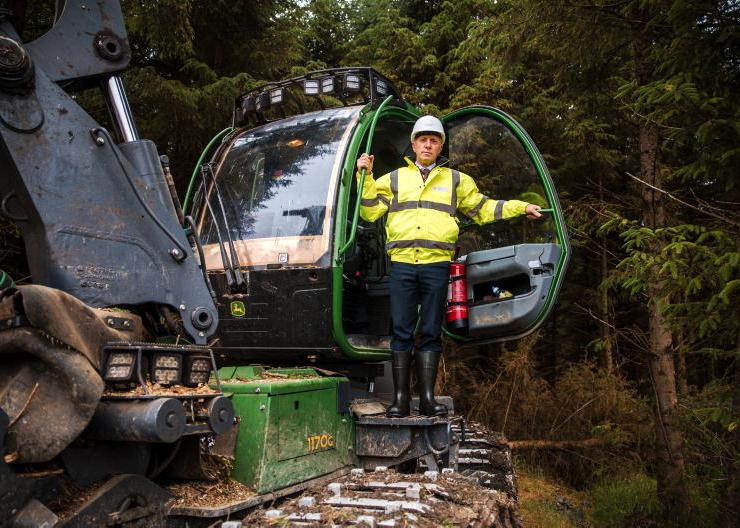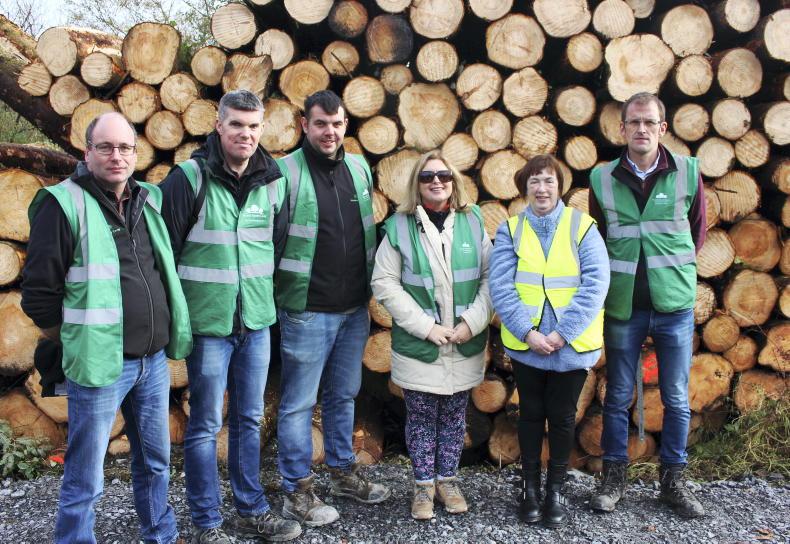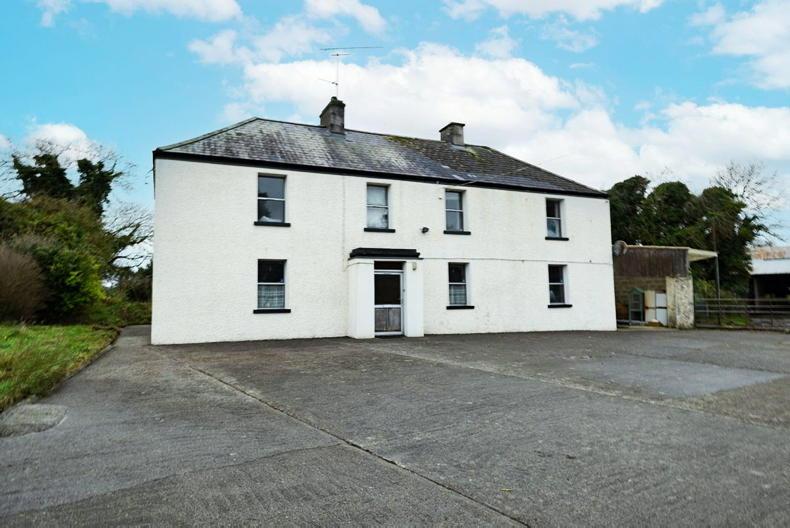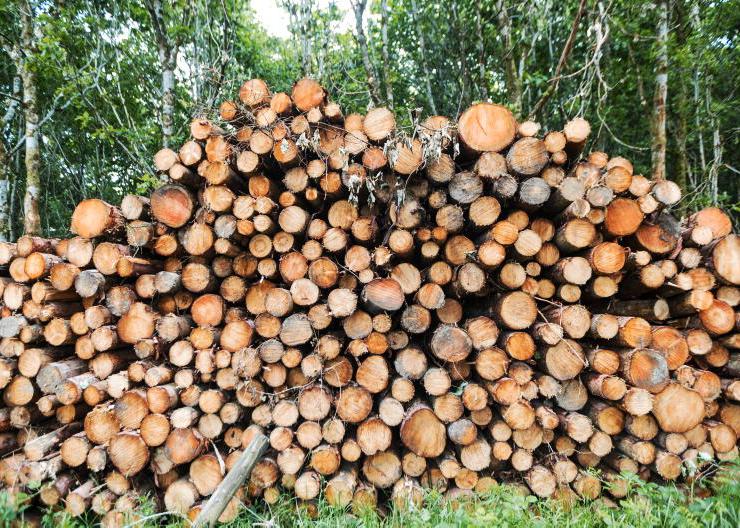DEAR EDITOR: I would like the opportunity to reply to the most informative article on the ‘Vexed question of forest ownership’. This question of ownership of land is more than vexing. I believe it is the most critical issue facing future forest development in Ireland today.
As on a farm, land ownership comes with a say in how things are managed.
In forestry, Coillte has inherited the nation’s forestry assets, owning them in trust for the Ministers of Finance and Agriculture on behalf of the people of Ireland. These forested lands have been afforested, or planted with non-native conifers, and managed for rapid profit, for almost 100 years. This tree planting programme has successfully reintroduced the tree (although mostly non-native conifers) into over 11% of all land, from near extinction, in 1922.
The ‘fork in the road’ for Irish forestry mentioned in the article, is about Ireland’s response to climate change, which has pinned a lot of hope and expectation on tree planting to offset future carbon emissions. This fork in the road requires a change in forestry management to plant at least 50,000ha of native and naturalised trees.
In Ireland’s deforested landscape, this will bring the native tree back to the countryside through re-afforestation – or regeneration and replanting of permanent woodland.
This change in management also requires a change in attitude. Why? Because most Irish people believe that native woodlands are a recreational luxury which cannot provide a commercial return. I have found this belief to be a legacy of the founding fathers of Irish State forestry in the 1920s and 30s.
In Ireland, the ancient skills and industries associated with woodlands were lost with the removal of the woods by departing landowners, during the late 19th and early 20th centuries, and with the decision not to ensure their revival by the new Irish State.
As the largest forestry estate owner in the country, and with possible EU or Government assistance, Coillte could lead, inspire, demonstrate and implement large-scale re-afforestation.
To transform Coillte, which is already an independent forestry development agency, into an integrated national forestry management agency, there are two basic changes needed in its operating mandate:
To include re-afforestation as well as afforestation of lands in national ownership, and To include the wood industries in its forestry development and management plans, to ensure that what is produced is what is required, and that the skills and technology are the best available. Such an agency would bring the difficult issues of modern forestry and the environment, and the reconnection of people to local woods under one roof, to be addressed with the co-operative approach of sustainable modern forestry management. It is thanks to public protests that this opportunity has not already been given away in the proposal to lease State lands in 2011. Irish State forestry implemented only one aspect of this policy – afforestation with conifers
This would also be the chance to implement one of the core policies of the first Dáil in 1919 which was the re-afforestation of Ireland with native woodlands.
This was to be undertaken alongside a large-scale conifer tree planting programme.
But Irish State forestry implemented only one aspect of this policy – afforestation with conifers. This tree planting programme was an experimental venture at the time but it had a ready market in the supply of mine timber for the UK.
So, ownership of forested land is key to the success of this new departure in Irish forestry, because only the State can provide the resources, leadership and skills to bring the 100-year old afforestation programme around to support the new re-afforestation programme, with skills, experience and local and international knowledge. This knowledge could be shared with community woodlands, and farmer woodlands.
The unique chance to adapt Irish forestry to changing climate has already been lost in the Coillte-Gresham deal, as forestry ownership and management decisions have been given over to the investment company, with a minimal national return in the provision of Coillte’s forestry services.
The question now is: will more time and valuable public resources be lost in Irish forestry, before an integrated national forestry management agency can be operational?
DEAR EDITOR: I would like the opportunity to reply to the most informative article on the ‘Vexed question of forest ownership’. This question of ownership of land is more than vexing. I believe it is the most critical issue facing future forest development in Ireland today.
As on a farm, land ownership comes with a say in how things are managed.
In forestry, Coillte has inherited the nation’s forestry assets, owning them in trust for the Ministers of Finance and Agriculture on behalf of the people of Ireland. These forested lands have been afforested, or planted with non-native conifers, and managed for rapid profit, for almost 100 years. This tree planting programme has successfully reintroduced the tree (although mostly non-native conifers) into over 11% of all land, from near extinction, in 1922.
The ‘fork in the road’ for Irish forestry mentioned in the article, is about Ireland’s response to climate change, which has pinned a lot of hope and expectation on tree planting to offset future carbon emissions. This fork in the road requires a change in forestry management to plant at least 50,000ha of native and naturalised trees.
In Ireland’s deforested landscape, this will bring the native tree back to the countryside through re-afforestation – or regeneration and replanting of permanent woodland.
This change in management also requires a change in attitude. Why? Because most Irish people believe that native woodlands are a recreational luxury which cannot provide a commercial return. I have found this belief to be a legacy of the founding fathers of Irish State forestry in the 1920s and 30s.
In Ireland, the ancient skills and industries associated with woodlands were lost with the removal of the woods by departing landowners, during the late 19th and early 20th centuries, and with the decision not to ensure their revival by the new Irish State.
As the largest forestry estate owner in the country, and with possible EU or Government assistance, Coillte could lead, inspire, demonstrate and implement large-scale re-afforestation.
To transform Coillte, which is already an independent forestry development agency, into an integrated national forestry management agency, there are two basic changes needed in its operating mandate:
To include re-afforestation as well as afforestation of lands in national ownership, and To include the wood industries in its forestry development and management plans, to ensure that what is produced is what is required, and that the skills and technology are the best available. Such an agency would bring the difficult issues of modern forestry and the environment, and the reconnection of people to local woods under one roof, to be addressed with the co-operative approach of sustainable modern forestry management. It is thanks to public protests that this opportunity has not already been given away in the proposal to lease State lands in 2011. Irish State forestry implemented only one aspect of this policy – afforestation with conifers
This would also be the chance to implement one of the core policies of the first Dáil in 1919 which was the re-afforestation of Ireland with native woodlands.
This was to be undertaken alongside a large-scale conifer tree planting programme.
But Irish State forestry implemented only one aspect of this policy – afforestation with conifers. This tree planting programme was an experimental venture at the time but it had a ready market in the supply of mine timber for the UK.
So, ownership of forested land is key to the success of this new departure in Irish forestry, because only the State can provide the resources, leadership and skills to bring the 100-year old afforestation programme around to support the new re-afforestation programme, with skills, experience and local and international knowledge. This knowledge could be shared with community woodlands, and farmer woodlands.
The unique chance to adapt Irish forestry to changing climate has already been lost in the Coillte-Gresham deal, as forestry ownership and management decisions have been given over to the investment company, with a minimal national return in the provision of Coillte’s forestry services.
The question now is: will more time and valuable public resources be lost in Irish forestry, before an integrated national forestry management agency can be operational?










SHARING OPTIONS